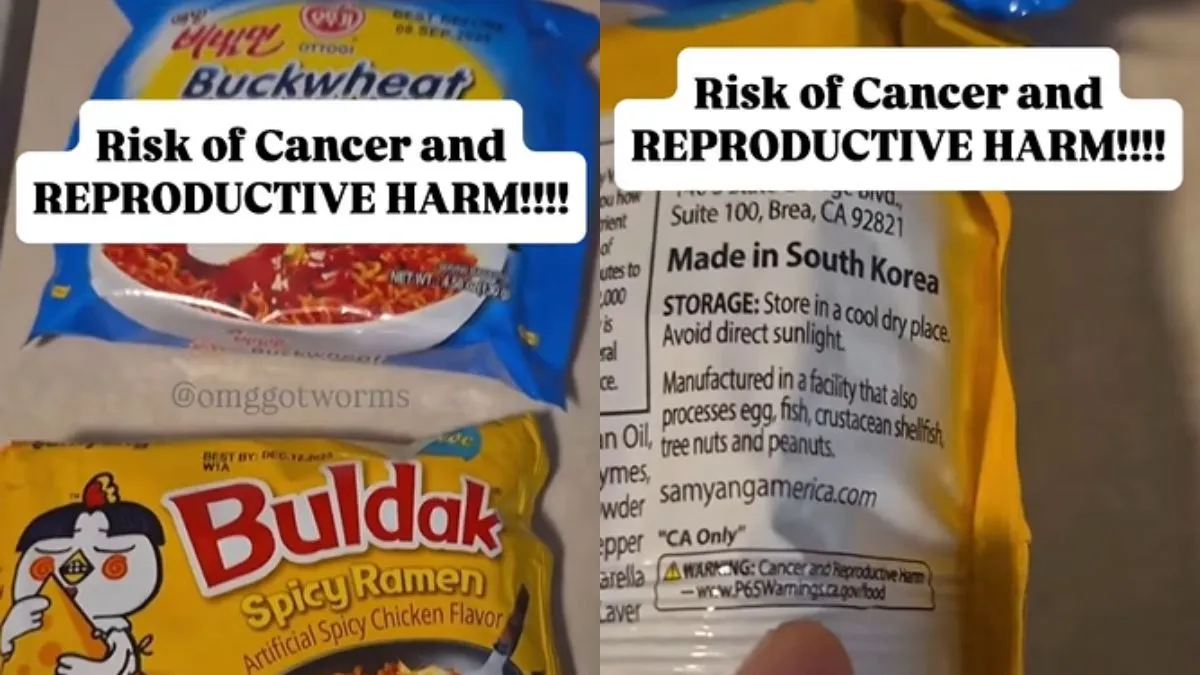Buldak Noodle Label Raises Health Concerns Across the World
Buldak noodle, one of South Korea’s most popular instant ramen brands, has recently sparked attention after a chilling health warning appeared on packages sold in California. The warning, which complies with the state’s strict safety regulations, alerts consumers that the product may contain substances that could pose health risks including those that might affect the reproductive system.
While this notice was issued under California’s Proposition 65, which mandates businesses to inform consumers of potential exposure to harmful chemicals, the discovery has left many global fans alarmed. What makes this more concerning is that the Buldak noodle recipe remains the same across all countries only the packaging and labeling differ. This revelation has raised questions about how much consumers truly know about what’s in their favorite spicy noodles.
The Samyang Food company, the manufacturer behind Buldak, has not altered the ingredients for the American market, meaning the same product millions enjoy worldwide may technically contain elements considered unsafe under certain U.S. regulations.
Understanding the Buldak Noodle Controversy
The Buldak noodle warning has quickly gone viral on social media, as fans expressed shock over seeing a caution label on a product known more for its extreme spice challenge than potential health risks. The California warning label does not mean the noodles are banned or unsafe to eat; rather, it reflects the state’s particularly cautious approach to public health.

Proposition 65, introduced in 1986, requires businesses to disclose any presence of chemicals known to cause cancer, birth defects, or reproductive harm. These substances can sometimes appear in trace amounts due to manufacturing or packaging processes, even if they are within limits approved by global food standards.
Experts suggest that the warning may stem from specific flavoring compounds, preservatives, or even packaging materials that, under California’s standards, must be disclosed. However, this does not imply that consuming Buldak noodle poses immediate danger to health. Still, for many loyal customers, the news has prompted a closer look at the ingredients list something often overlooked when convenience and flavor take priority.
The manufacturer, Samyang, has built a global empire around Buldak, with its signature “Hot Chicken Flavor” noodles becoming a cultural phenomenon among spice lovers. The product line includes flavors like Carbonara, 2x Spicy, and Cheese, all maintaining the same fiery base sauce. Given its worldwide distribution, the discovery of a warning label in one region has naturally fueled public curiosity and anxiety.

Why the Same Buldak Noodle Recipe Matters Worldwide
What makes this situation more noteworthy is that Buldak noodle has not been reformulated for different markets. The same recipe enjoyed by consumers in Asia, Europe, and the Middle East is used for products sold in the United States. The only difference lies in the packaging, where California’s regulations require visible health warnings. Also Read: JK December 12: India Awaits the Grand ‘Golden: The Moments’ Exhibition Celebrating Jung Kook’s Legacy
This means that fans across the world are eating the exact same noodles even if the labels look different. For some, this has raised concerns about whether other countries should adopt similar transparency measures. For others, it’s a reminder of how local food laws vary from one nation to another.

Despite the controversy, the brand continues to dominate instant noodle shelves globally. Many nutrition experts emphasize moderation rather than avoidance, noting that processed foods like instant noodles should be an occasional treat rather than a daily habit.
Conclusion
The Buldak noodle warning in California serves as a reminder of how regional laws and consumer protection policies can differ, even for globally popular products. While the presence of the label does not necessarily indicate immediate danger, it encourages more awareness about what goes into the foods we love.
As discussions continue online, one thing remains clear — the world’s obsession with spicy noodles isn’t slowing down. But this latest incident has certainly added a new layer of thought the next time someone reaches for a pack of Buldak noodle and prepares to take on its fiery challenge.

